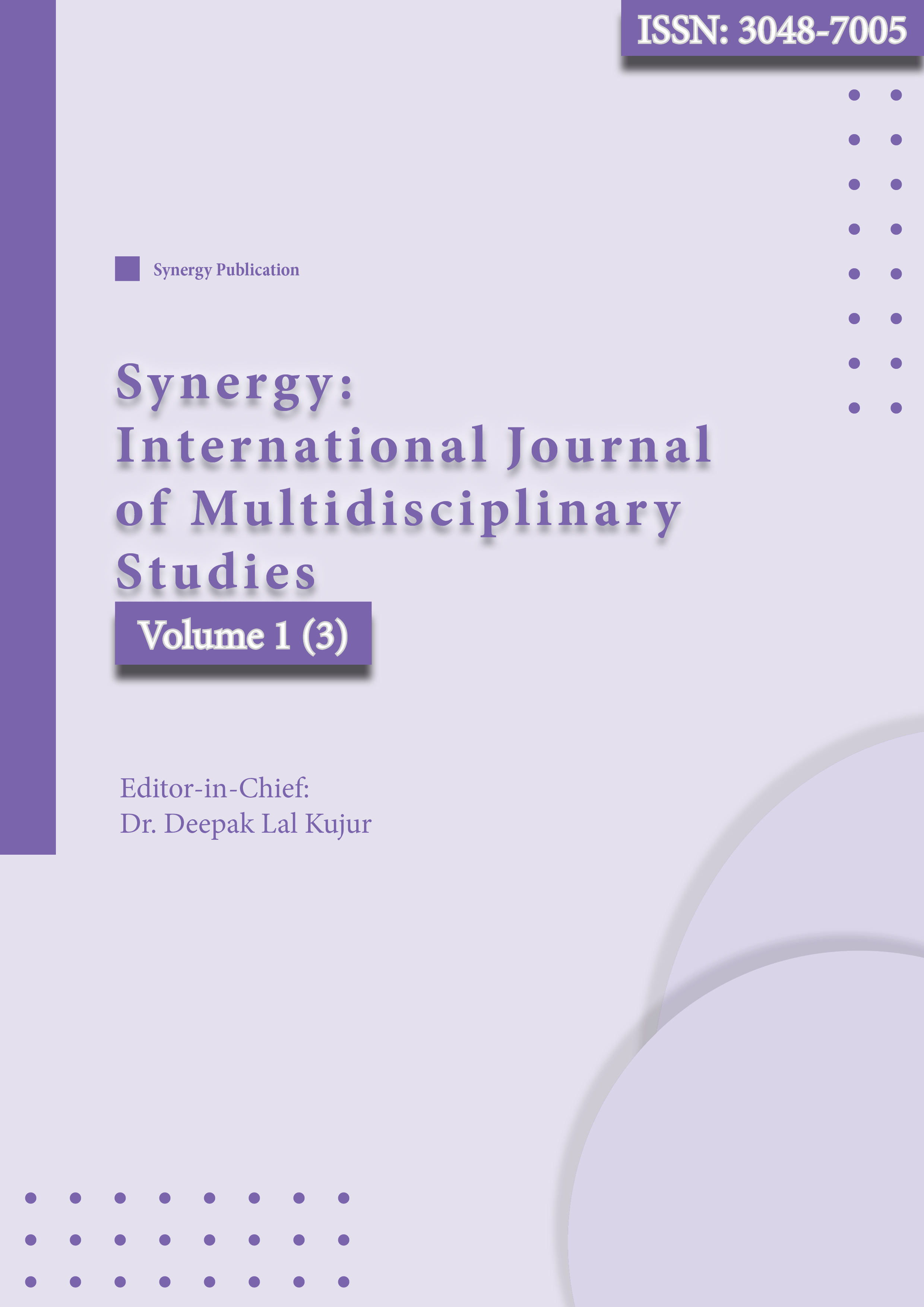Consolidating Bilateral Ties Between India and the United States: A Post-Galwan Study
DOI:
https://doi.org/10.63960/sijmds-2024-1354Keywords:
Galwan Clash, China, India, USA, QUAD, BECAAbstract
This paper was composed in an effort to comprehend the nature of Indo-American relations after the 2020 Galwan Clash between India and China. The paper argues that the increasing Chinese aggression left India with no choice but to respond militarily. In light of the growing asymmetry of power between India and China, which favours China, India requires foreign assistance to strengthen its defence capabilities against China. The United States is a natural choice because it has sophisticated military technology and, like India, feels threatened by China’s rise. Washington’s leadership views India as a natural ally against China in Asia. After the Galwan Clash, significant developments between Washington and New Delhi occurred, such as the QUAD revitalisation and the BECA agreement. However, bilateral relations are not immune to the challenges highlighted in this paper. If both nations collaborate, these obstacles can be overcome, and the potential of ties can be realised.
Downloads
References
Bajpai, K. (2021). India versus China: Why they are not friends (pp. 1–9). Juggernaut Books.
Basu, T. (2023, June 01). The Quad needs to raise the game in the Indian Ocean. Observer Research Foundation. https://www.orfonline.org/expert-speak/the-quad-needs-to-raise-the-game-in-the-indian-ocean/
Bhandari, K. (2023, June 12). India and the United States’ good bet: One year of the U.S.-India initiative on critical and emerging technology. Carnegie India. https://carnegieindia.org/2023/06/12/india-and-united-states-good-b...india-initiative-on-critical-and-emerging-technology-icet-pub-89926
Dikotter, F. (2022). China after Mao: The rise of a superpower (pp. 239–249). Bloomsbury Publishing.
Gokhale, V. (2022a). After Tiananmen: The rise of China (pp. 5–20). HarperCollins Publishers.
Gokhale, V. (2022b). A historical evaluation of China’s India policy: Lessons for India-China relations (Working Paper, pp. 1–22). Carnegie India.
India-China trade climbs to USD 135.98 billion in 2022, trade deficit crosses USD 100 billion for the first time. (2023, January 13). The Economic Times. https://economictimes.indiatimes.com/news/economy/foreign-trade/india-china-trade-climbs-to-usd-135-98-billion-in-2022-trade-deficit-crosses-usd-100-billion-for-the-first-time/articleshow/96969775.cms?from=mdr
India to remain 5th largest economy in 2023, says RBI bulletin. (2023, January 19). Mint. https://www.livemint.com/economy/india-to-remain-5th-largest-economy-in-2023-says-rbi-bulletin-11674148679786.html
Jha, P. (2023, March 22). US warned India of Chinese incursion: Report. Hindustan Times. https://www.hindustantimes.com/cities/delhi-news/us-warned-india-of-chinese-incursion-report-101679422352190.html
Kewalramani, M. (2021). Smokeless war: China’s quest for geopolitical dominance (pp. 158–163). Bloomsbury Publishing.
Laskar, R. H. (2020, December 2). China ‘planned’ Galwan Valley clash, US commission says in report to Congress. Hindustan Times. https://www.hindustantimes.com/world-news/china-planned-galwan-valley-clash-us-commission-says-in-report-to-congress/story-yZEK4tFfdcDOhNvnLVzigN.html
Lee, C. M. (2021). China’s rise and Asia’s new security dilemma. In S. B. Sharma (Ed.), A new Cold War: Henry Kissinger and the rise of China (pp. 53–64). HarperCollins Publishers.
Markey, D. (2023, July/August). India as it is: Washington and New Delhi share interest, not values. Foreign Affairs, 102, 128–143.
Mearsheimer, J. J. (2014). The tragedy of great power politics (Updated ed., pp. 1–28, 269–274). W. W. Norton & Company.
Mishra, V. (2023). India-US defence relationship in the 21st century. Observer Research Foundation: Issue and Brief, 622, 1–18.
Pant, H. V. (2022, March). India and the Quad: Chinese belligerence and Indian resilience. Observer Research Foundation. https://www.orfonline.org/research/india-and-the-quad/ DOI: https://doi.org/10.37839/MAR2652-550X9.19
PM Modi performs Yoga on International Yoga Day at UN headquarters in New York. (2023, June 21). Hindustan Times. https://www.hindustantimes.com/india-news/pm-modi-performs-yoga-on-international-yoga-day-at-un-headquarters-in-new-york-watch-101687353458689.html
Purayil, M. P. (2021). The rise of China and the question of an Indo-US alliance: A perspective from India. Asian Affairs, 52(1), 62–78. https://doi.org/10.1080/03068374.2021.1884323 DOI: https://doi.org/10.1080/03068374.2021.1882139
Rossow, R. (2021). Agenda 21: A blueprint for U.S.-Europe-India trade and economic cooperation. German Marshall Fund of the United States. https://www.jstor.org/stable/resrep30241
Saran, S. (2022). How China sees India and the world: The authoritative account of the India-China relationship (pp. 224–232). Juggernaut Books.
Siddiqa, A. (2022, September 16). ‘Sale’ of F-16 spares is US way to keep Pakistan where it wants to be—between China and West. The Print. https://theprint.in/opinion/sale-of-f-16-spares-is-us-way-to-keep-pakistan-where-it-wants-to-be-between-china-and-west/1130194/
Singh, A. (2023, June 16). The Modi-Biden dynamic for next steps in India-US relations. Carnegie India. https://carnegieindia.org/2023/06/16/modi-biden-dynamic-for-next-steps-in-india-u.s.-relations-pub-89972
Singh, G. (2023, June 15). QUAD and ASEAN. Observer Research Foundation. https://www.orfonline.org/expert-speak/quad-and-asean/
Tarapore, A. (2021). The crisis after crisis: How Ladakh will shape India’s competition with China. Lowy Institute for International Peace. https://www.jstor.org/stable/resrep33508
Tellis, A. J. (2015). U.S.-India relations: The struggle for an enduring partnership. In D. M. Malone, C. R. Mohan, & S. Raghavan (Eds.), The Oxford handbook of Indian foreign policy (pp. 481–494). Oxford University Press.
Tellis, A. J. (2020). Hustling in the Himalayas: The Sino-Indian border confrontation (pp. 1–6). Carnegie Endowment for International Peace.
Tellis, A. J. (2023, May 1). America’s bad bet on India: New Delhi won’t side with Washington against Beijing. Foreign Affairs. https://www.foreignaffairs.com/india/Americas/-bad-bet-modi
US has world’s most powerful military, Pak in 7th place, Bhutan weakest. Is India in top 10? List. (2023, July 10). Hindustan Times. https://www.hindustantimes.com/world-news/most-powerful-military-india-army-united-states-russia-china-firepower-biggest-army-101688980596152.html
US says it stands with India against Chinese aggression. (2022, February 04). The Indian Express. https://indianexpress.com/article/world/beijing-olympics-china-pla-soldier-torchbearer-us-reaction-7756022/
What US, India have agreed on: Tech and defence partnerships, initiatives on visas and education, and more. (2023, June 23). The Indian Express. https://indianexpress.com/article/explained/explained-global/us-india-joint-statement-8682496/
Zakaria, F. (2023, June 23). Lecturing India’s leader on human rights is not the best path. The Washington Post. https://www.washingtonpost.com/opinions/2023/06/23/us-india-china-interests-people/









